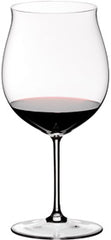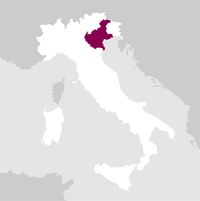Description
It was the operational genius - as often happens - that realised that much could still be made from the skins of the grapes pressed to make Amarone. That is why the company decided to 'referment' the Valpolicella wine on the skins and leave it to absorb more complex aromas, alcohol content and part of the structure of Amarone. After about ten days, the Valpolicella rediscovered itself as a new wine with a good body, a high alcoholic content and a greater complexity of aromas. A new production method was established, typical of Valpolicella.
Details

Perfume

Color

Taste
Serve at:
16 - 18 °C.
Longevity:
10 - 15 years
Decanting time:
1 hour

Pairings
- Start up year: 2015
- Oenologist: Giovanni Casati
- Bottles produced: 46.000
- Hectares: 17
Thanks to favourable exposure, a particular microclimate and a steep slope, the typical varieties of Valpolicella area are grown: Corvina, Corvinone, Rondinella and Oseleta grapes. This terroir gives the grapes a specific elegance in scents, great minerality and excellent ageing capacity.
An estate of excellence for high-quality production, where the balance between tradition and latest generation techniques and the daily work of the agronomist Giovanni Casati has brought the wines produced to levels of excellence in a short time. This year the Amarone 2015 is positioned on the top step of the podium, achieving an exceptional result in so few years of production. Read more


| Name | Costa Arente Valpolicella Ripasso Valpantena Superiore 2020 |
|---|---|
| Type | Red still |
| Denomination | Valpolicella Ripasso DOC |
| Vintage | 2020 |
| Size | 0,75 l |
| Alcohol content | 14.0% by volume |
| Grape varieties | 50% Corvina, 30% Corvinone, 10% Rondinella |
| Country | Italy |
| Region | Veneto |
| Vendor | Costa Arente |
| Origin | Grezzana (Verona). |
| Cultivation system | Trellised "Pergola" system and Guyot. |
| Yield per hectare | 7,900 kg/hectare. |
| Harvest | The first weeks of October. |
| Wine making | The destemmed and crushed grapes are left to ferment in stainless steel containers of 100-hl each at controlled temperatures from 25°C to 28°C. Frequent pumping over and delestage favour the extraction of tannins and polyphenols from the skin. The wine thus obtained is left to rest in steel tanks where malolactic fermentation takes place entirely. At the beginning of February, after the racking of the Amarone, the Valpolicella destined to become Ripasso, is refermented on the skins of the Amarone for 15 days at 15°C with daily punching-down, thus allowing the extraction of aromas and alcohol from the skins of the Amarone, which give new personality to the Valpolicella. At the end, the Ripasso is again drawn off and destined for refinement. |
| Aging | In May the wine is transferred into Slavonian oak barrels for 9 months and a further 3 months of bottle ageing completes the production process. |
| Total acidity | 5.4 gr/L |
| Residual sugar | 8.0 gr/L |
| Allergens | Contains sulphites |




